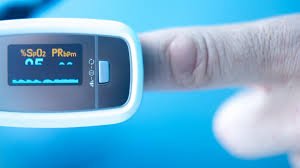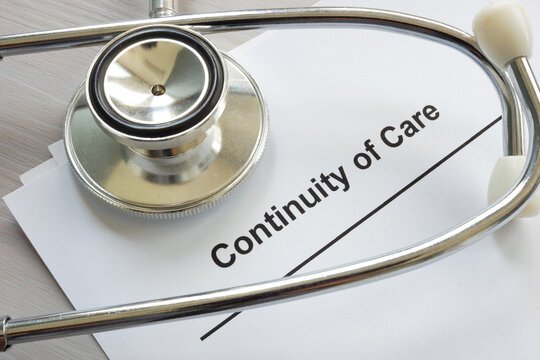Telemedicine, the practice of delivering healthcare services remotely through digital platforms, has revolutionized modern healthcare. With the rise of technology and the impact of the COVID-19 pandemic, telemedicine has rapidly gained traction across the world. It allows patients to connect with healthcare providers from the comfort of their homes, offering a range of benefits that traditional in-person visits cannot always provide. Here are the top 10 benefits of telemedicine in modern healthcare.
1. Convenience for Patients

One of the biggest advantages of telemedicine is the convenience it offers. Patients can schedule appointments and receive medical advice without having to leave their homes. This is particularly helpful for people living in rural areas, those with mobility issues, or individuals who simply cannot afford to take time off work for in-person visits.
Instead of waiting for hours in a clinic or hospital, patients can connect with their healthcare provider from anywhere using a smartphone, tablet, or computer.
2. Reduced Exposure to Infectious Diseases

In a world where infectious diseases like COVID-19 pose significant risks, telemedicine helps protect patients and healthcare workers by minimizing physical contact. Telemedicine allows individuals with contagious conditions, such as flu or viral infections, to receive care without risking the health of others.
This is particularly crucial for high-risk patients, such as the elderly and those with chronic illnesses, who are more vulnerable to complications from infections.
3. Improved Access to Specialists
Telemedicine has opened the doors to specialist care for patients who may not have access to such services in their locality. Many rural areas face shortages of specialists, but telemedicine bridges this gap by connecting patients with experts from other cities or even other countries.
For example, a patient needing specialized oncology care can consult with top oncologists remotely, without needing to travel long distances.
4. Cost-Effectiveness

Telemedicine often proves to be more affordable than traditional in-person visits. It saves patients money on transportation, childcare, and even lost wages from taking time off work. Many insurance companies are now covering telemedicine visits, making it an attractive option for both healthcare providers and patients.
Moreover, hospitals and clinics can also reduce overhead costs by offering telehealth services, resulting in lower overall healthcare expenses.
5. More Efficient Management of Chronic Conditions

For patients managing chronic diseases like diabetes, hypertension, or asthma, telemedicine provides a simple way to stay in touch with healthcare providers for regular check-ups. With the use of monitoring devices, healthcare providers can track a patient’s health status remotely and adjust treatment plans as needed.
This continuous care helps in better disease management and can prevent complications, reducing the need for emergency visits or hospitalizations.
6. Shorter Waiting Times

Long waiting times for medical appointments can be a source of frustration for patients. Telemedicine reduces these wait times by making it easier for healthcare providers to schedule quick virtual consultations. Many issues, such as medication refills, follow-up questions, or minor health concerns, can be addressed immediately through telemedicine platforms, freeing up in-person visits for more complex cases.
7. Enhanced Mental Health Support

Telemedicine has greatly expanded access to mental health services, which are often stigmatized or limited by location. Through virtual therapy sessions, patients can seek counseling or psychiatric services from the comfort of their own homes, encouraging more people to seek help.
Telepsychiatry has proven to be particularly beneficial for those struggling with anxiety, depression, or other mental health disorders, as it eliminates the need for face-to-face visits and reduces barriers to treatment
8. Improved Patient Monitoring

Wearable devices and remote monitoring tools have allowed healthcare providers to track patients’ vital signs in real time. Patients can send data such as heart rate, blood pressure, and glucose levels directly to their healthcare provider, who can intervene promptly if something is wrong.
This constant monitoring has been especially helpful in managing patients with heart conditions or diabetes, providing early warnings that could prevent serious health events
9. Continuity of Care

One of the key challenges in healthcare is ensuring that patients follow up with treatments and medical advice after their initial visit. Telemedicine enables more consistent follow-up care since patients can easily schedule appointments and keep in touch with their healthcare provider.
Whether it’s following up on test results or adjusting a treatment plan, telemedicine makes it easier for patients to stay engaged in their own care, leading to better health outcomes.
10. Environmental Impact

Telemedicine also offers environmental benefits by reducing the need for travel. Fewer trips to the hospital or clinic mean lower carbon emissions from transportation, helping to reduce the environmental footprint of healthcare. In addition, the shift to digital records and consultations cuts down on paper use and other resources, making healthcare more sustainable.
Conclusion
Telemedicine is transforming the landscape of modern healthcare by providing convenience, improving access to specialists, reducing costs, and ensuring better management of chronic conditions. Its ability to reduce waiting times, enhance mental health services, and provide real-time patient monitoring shows its significant potential to improve overall health outcomes. With ongoing advancements in technology, telemedicine is set to become an even more integral part of the healthcare system, offering patients around the world better and more efficient care.
Telemedicine is not just a temporary solution; it is a sustainable, long-term approach that offers numerous benefits for both patients and healthcare providers alike.
